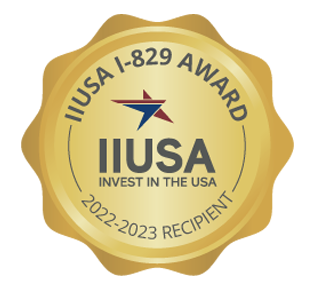Documenting source and path of funds being invested in an EB-5 project is one of the most critical steps in the EB-5 journey. U.S. Citizenship and Immigration Services (USCIS) wants to make certain that the funds being invested for immigration benefits are not sourced from illegal sources (such as terrorism or drug trafficking).
EB-5 visa process mainly involves 2 applications:
- Application for a conditional green card or I-526 Petition; and
- Application for removal of conditions on permanent resident status or I-829 Petition.
To get an approval of I-526 Petition, EB-5 investors need to prove beyond reasonable doubt that the funds they are investing have been both sourced legally and have been transferred to the project legally. If USCIS has a doubt regarding the source of funds of the investor, USCIS may issue a Request for Evidence (RFE), Notice of Intent to Deny (NOID) or a Denial. This may delay or deny immigration benefits to EB-5 investors even after investing the requisite amount of funds. Documenting source and path of funds is a very complex and a time-consuming process, it is highly recommended that EB-5 investors retain an experienced immigration attorney with extensive knowledge of EB-5 regulations and the local laws of the country where the funds are originating from.
USCIS does not have a standard checklist for proving the source of funds. EB-5 investors are encouraged to provide any and all documents they have that show the generation, accumulation, and transfer of funds. There may be circumstances where some documents are missing, as long as there is a legitimate reason and an affidavit or a letter of support can be provided from the applicable authority or institution, EB-5 investors may be able to overcome the deficiency.
The standard of proof to prove legality of funds is “preponderance of evidence”, i.e., EB-5 investors are required to prove that there is a greater likelihood than not that the funds are legal. In order to meet this burden, EB-5 investors need to provide clear documents to show a chain of custody of the funds. Regardless of the source of funds, EB-5 investors are encouraged to include last 5 years of their income tax returns, if available.
There are many ways to source funds for an EB-5 investment. Some of the common ways and their documentation requirements are as follows:
- Sale of Property: If part or whole of EB-5 capital is generated from a sale of property, apart from documenting the sale of the property and receipt of the sale proceeds, EB-5 investors must provide documentation to prove acquisition of the property, i.e., purchase, gift or inheritance.
- Acquisition:
- In case of purchase, the investor needs to prove to a reasonable certainty that the funds used to acquire the property were lawfully sourced.
- In case of gift, the burden shifts to the Giftor to prove that the property was acquired lawfully and then gifted to the investor.
- In case of inheritance, the investor needs to prove the relationship with the deceased and instrument causing the property to be transferred to the investor.
- Sale:
- Sale deed
- Valuation of property
- Receipt of sale proceeds in the bank account
- Acquisition:
- Gift: Gift of funds is a very common source of funds amongst student investors. Usually, the funds are gifted from parents or a close relative. Gifting moves the burden of proving lawful sources on the Giftor. Gift of funds requires the following documentation:
- Documents to prove that the funds have been acquired legally.
- Gift deed mentioning the relationship and the gift.
- Proof of relationship between the Giftor and Giftee or Donor and Donee.
- Professional Income: Another common source of funds is professional income. In order to prove the source of funds derived from the professional income, EB-5 investors need to provide the following documents:
- Present documentation to prove relationship with the employer and compensation by way of an employment contract and/or a letter from the human resources (HR).
- Present bank account statements showing receipt of funds and accumulation of investment funds.
- Present income tax return wherever available or a letter from a local accounting firm in countries where income tax filing is not the norm.
- Liquidation of Investment Portfolio: In order to prove the source of funds derived from liquidation of investment portfolio, EB-5 investors need to provide the following documents:
- Proof of legality of funds invested in the investment portfolio
- Portfolio statements showing inflows and growth of funds
- Statement showing liquidation of portfolio and receipt of funds in the bank account
- Transfer of funds to the project
- Loan: EB-5 investors can fund the investment by taking a loan from an institution or an individual. To prove the legality of funds derived from this type of a loan, EB-5 investors need to provide the following documents:
- Institution:
- Loan agreement between the investor and the financial institution
- In case an asset is put as a collateral, documentation to prove the ownership of the collateral
- Valuation certificate of the asset
- Proof of legality of funds used to acquire the asset
- Bank account statement showing loan disbursement
- Individual: In addition to the above documents, the individual loaning the funds needs to provide documents to prove the funds have been acquired legally.
- Institution:
For more information on GGG and EB-5, please follow us on YouTube, Twitter, Facebook, LinkedIn and Instagram.


